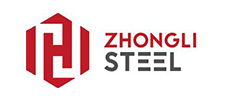News
Welding of large equipment steel components is a common type of equipment welding nowadays, including stainless steel welding and carbon steel welding. Steel has many characteristics, and there are many precautions for its welding process. Today, we will talk about some welding methods during installation.
The common welding method is arc welding, including manual, automatic or semi-automatic arc welding, and gas shielded welding.
1. Manual arc welding has simple mechanical equipment and is sensitive and convenient in practical operation. It is particularly suitable for overlapping short welds, but the working conditions are relatively poor, and the productivity is lower than that of automatic or semi-automatic welding. The special quality of the weld seam depends to some extent on the technical strength of the technician.
2. Automatic or semi-automatic submerged arc welding. Submerged arc welding is an electric arc welding technology mainly used for arc welding. The movement and welding direction of the solder are controlled by a dedicated mechanism called submerged arc automatic welding; The main metals are welding wire and flux. The welding wire should meet the requirements of industry standards, and the welding wire should be controlled by a specialized organization. The flux should follow the welding regulations, and the movement of the welding direction should be operated by workers. Submerged arc welding wire does not have a coating, but the welding end face is made of granular flux. The arc is fully submerged in an arc shape, with a deep penetration, suitable for welding thick plates, and has high productivity. The welding process conditions are stable, the chemical composition of the weld seam is uniform, the welding quality is good, the welding quality is high, the deformation is small, and the welding quality is good. As the welding speed increases, the range of the heat affected zone also expands. But the requirements for welding edge accuracy such as gap between welded parts in submerged arc welding are higher than those in manual welding.
3. Gas shielded welding. Gas welding uses carbon dioxide gas or other inert gases as a protective medium for arc welding. To prevent harmful gases from entering and ensure the stability of the welding process, a local protective layer is directly formed around the arc by the protective gas. There is no slag at the atomization welding point, allowing workers to observe the deformation process of the connection more clearly; Because the protective oxygen is sprayed to accelerate droplet combustion; Due to heat concentration, fast welding speed, and deep penetration, the weld strength formed is higher than that of manual arc welding, and it has good plasticity, corrosion resistance, and is suitable for all position welding. However, welding operations are not suitable in windy areas. Gas shielded welding uses rare gas (or CO2) gas as the maintenance material for the arc, isolating the molten metal from the gas and maintaining the stability of the entire welding process. Gas shielded welding has concentrated arc heating, faster welding speed, and higher weld strength than manual welding. And it has good stress and corrosion resistance, suitable for welding carbon steel plates.
4. Resistance welding
Resistance welding is the hot melt metal produced by the resistance of the contact surface on the welded part through current, and then welded together under pressure. When the thickness of the thin steel plate is less than 12mm, resistance welding is used. For cold-formed thin-walled steel components, resistance welding can be used to bond components below 3.5mm.
Weld connections can be divided into four types: connections, lap connections, T-shaped connections, and corner connections, which are made by connecting the components to each other. This type of connection typically uses three basic types of welds: welds and fillet welds. In the practical application of steel structure installation, the bearing capacity of the connection should be selected, and the manufacturing, installation, and welding conditions should be chosen.
Please give us a message
من فضلك أعطنا رسالة


